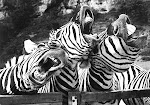The gambling industry's mighty disinformation machine holds that the house edge cannot be beaten in the long run because every sample of random outcomes differs from every other except in one component: negative expectation.
We are all supposed to believe that a sample of more than 70,000 blackjack outcomes like those in the current BST trial can never be duplicated, so a betting method that beats that data set will fail against another of similar size.
Quelle crappe! comme ils disent en France.
It is, like so much of the conventional wisdom applied to gambling, a partial truth. And we all know that a half truth is not a whole lot truer than a lie.
Within a representative sample of more than 50,000 outcomes, pair patterns will be constantly repeated, three-round patterns less so, identical four-bet sequences less often, and so on. By the time you widen the sample within a sample to look for identical patterns of 10 bets or more, you are going to be out of luck.
So it is true to say that one large sample of random outcomes can never be precisely repeated.
And that begs the terse two-word question: So what?
The house relies for its profits on broad or big picture predictability in two critical areas, player behavior and/or resources, and random win-loss patterns.
The house edge is more reliably predictable the larger the sample of outcomes, and much the same applies to gamblers (the bigger the crowd, the deeper the hole!).
There may be a few dozen outcomes in which the house advantage can barely be discerned, just as a handful of players in thousands might have the knowledge and bankroll to be a serious threat to the casino's bottom line.
But the further we "zoom out" in terms of sample size, the more likely it is that the house advantage will prevail and that the majority of gamblers, even those who won more bets than they lost, will surrender their bankrolls in dutiful compliance with with negative expectation.
Today's post revisits the topic of the certain danger inherent in tight betting spreads by examining expanded data from the BST blackjack trials.
Here's a summary:-

What this tells us is that narrow spreads (defined as 1-500 or less!) are virtually certain to fail, even with target betting rules applied. And the negative odds, bad as they already are, worsen still further if disciplined money management is not in play.
I have used a $5-$25,000 spread (1-5,000) throughout the blackjack trials, and I am well used to skeptics squawking in unison that a bet range that wide is ludicrously unrealistic and far out of the reach of the regular weekend punter.
To take the last point first, the regular weekend punter has neither the resources nor the desire to do what it takes to win consistently.
And in this context the only function of the "recreational gambler" is to provide the gambling industry with the profits it needs to pay off a few winners here and there without going broke.
Very large bets are indeed a reality, especially in casinos that try to cater simultaneously to shoestring players arriving by coach to fritter their tiny wads on the slots, and high rollers winging in from afar in private jets.
A $25,000 bet is 10% of what some "whales" will risk on the turn of a card, and no one knows better than the gambling industry that big bucks do not a winner make any more than does a penny-ante purse-full! In other words, the pot cannot be bought...it has to be earned.
I remember years ago playing at a blackjack table with an immaculately-dressed and courteous gent from Mexico City whose response when the dealer warned us of her current hot streak was, "You can't beat me; I have too much money."
He said it with tongue in cheek, but I got the feeling he believed it, and ever since I have wondered how he fared during his wild weekend in Nevada. Badly, I fear.
Money is essential to long-term success at gambling, there is no doubt about that. But money alone will not beat the house advantage in the long run.
As for the claimed "uniqueness" of large blocks of random outcomes, casinos know that even a runaway sim cannot produce representative data sets in which prolonged negative trends are not at least partially offset by opposite patterns.
It simply can't be done.
A gambler who, like most players, relies on winning more bets than he loses will eventually surrender his bankroll. That's a fact. Even an equal number of wins and losses is a long-term impossibility in a game with a house bias (and of course, there is no other kind).
The only way to win, therefore, is to recoup losses from a succession of "wrong" bets with a smaller number of winners.
To repeat a simple example: 49 wins and 51 losses against a game with a 2.0% house edge adds up to red ink if the overall average bet value is $10; but if the average win value is $10.50 and the average loss value is $9.50, $514.50 in wins trump $484.50 in losses in spite of that same 2.0% house edge, delivering a profit equal to a 3.0% "hold" of action.
The house always has complete confidence that over time, wild fluctuations against it will be evened out by the anti-player bias, and that a slightly greater number of player losses than wins will, given random bet values, make the game profitable for the casino.
Without that "big picture" predictability, any game would be too risky for the house to venture. And that's the name of that tune...
An important reminder: The only person likely to make money out of this blog is you, Dear Reader. There's nothing to buy, ever, and your soul is safe (from me, at least). Test my ideas and use them or don't. It's up to you.
_


No comments:
Post a Comment